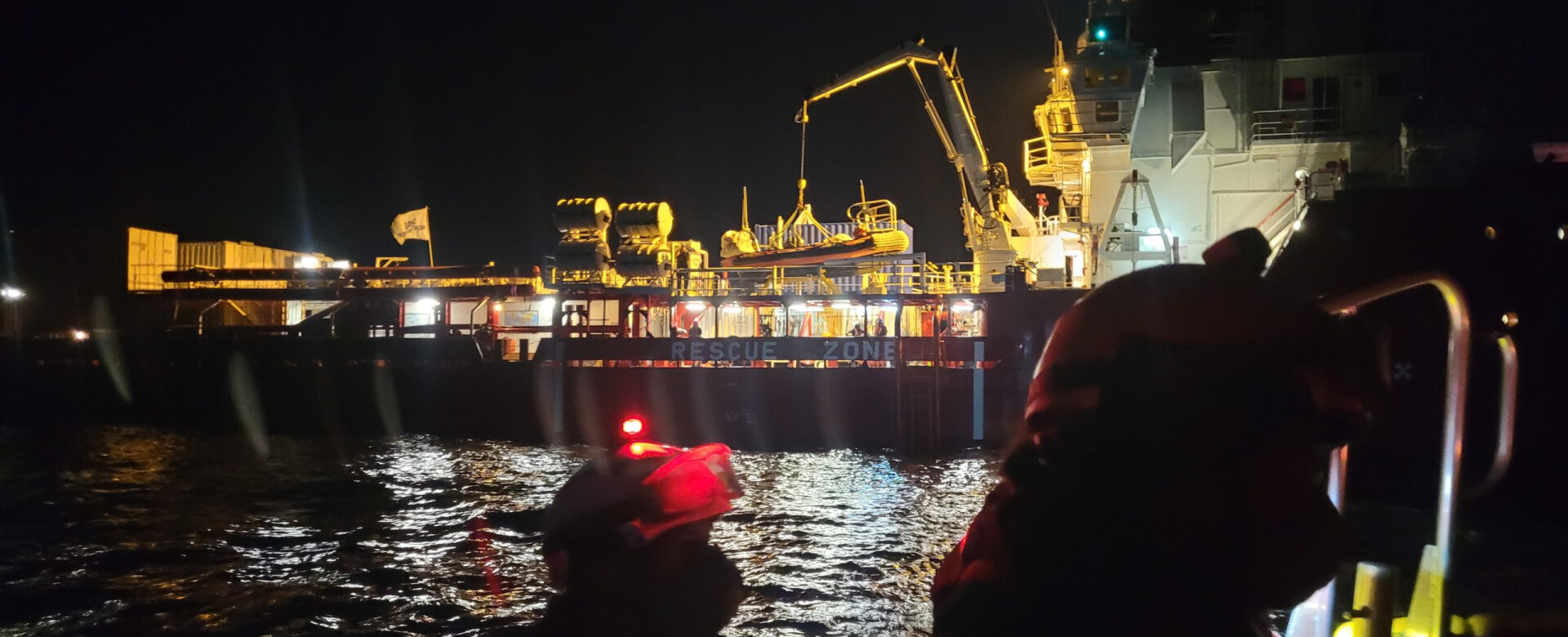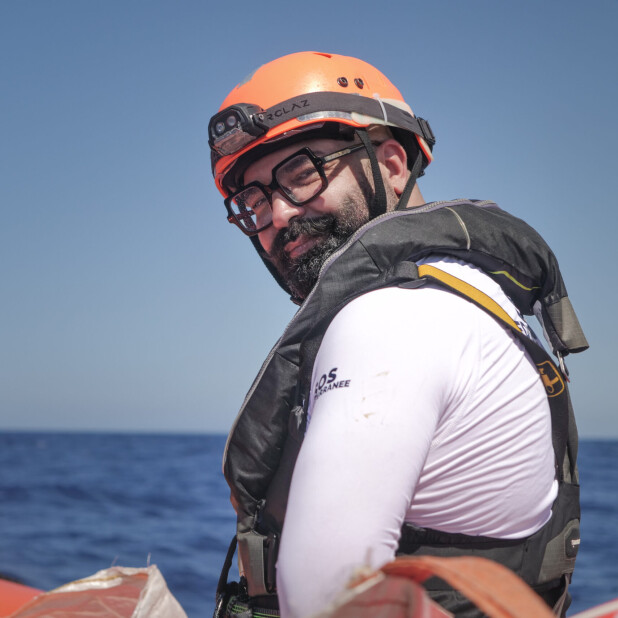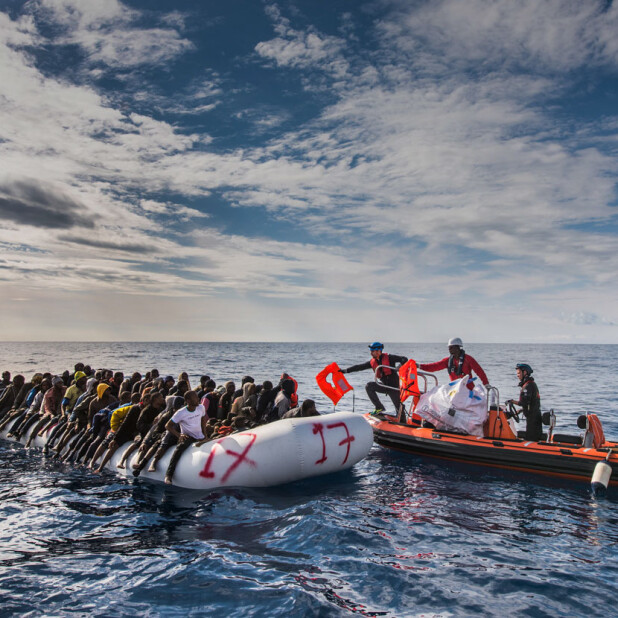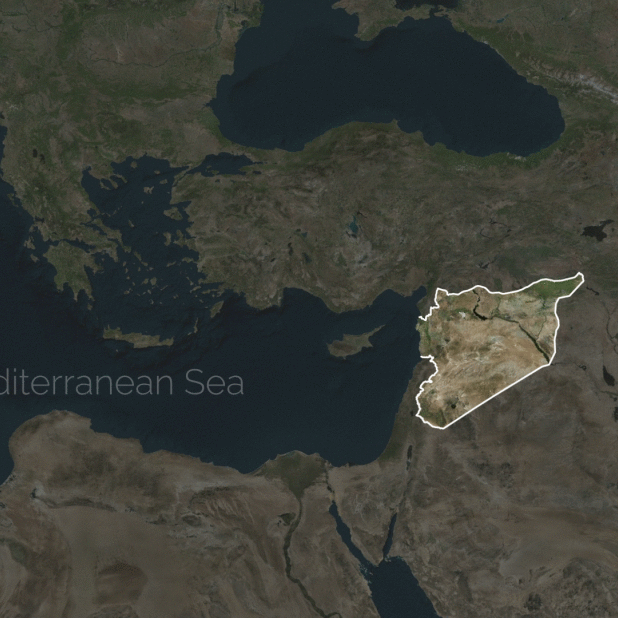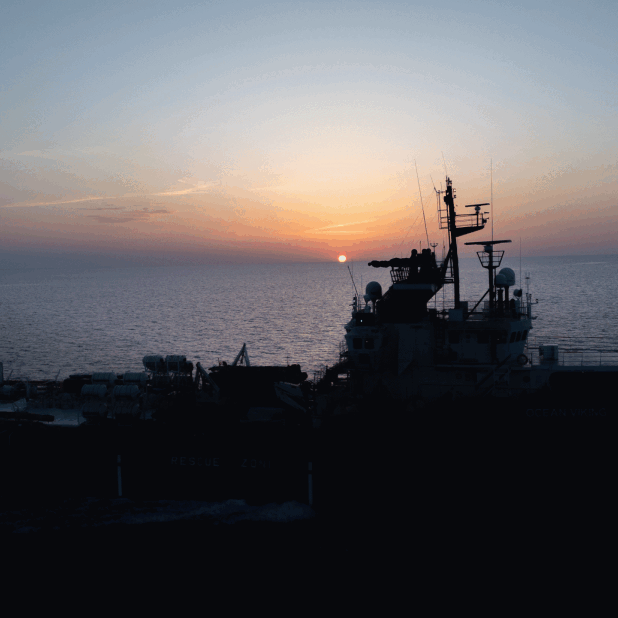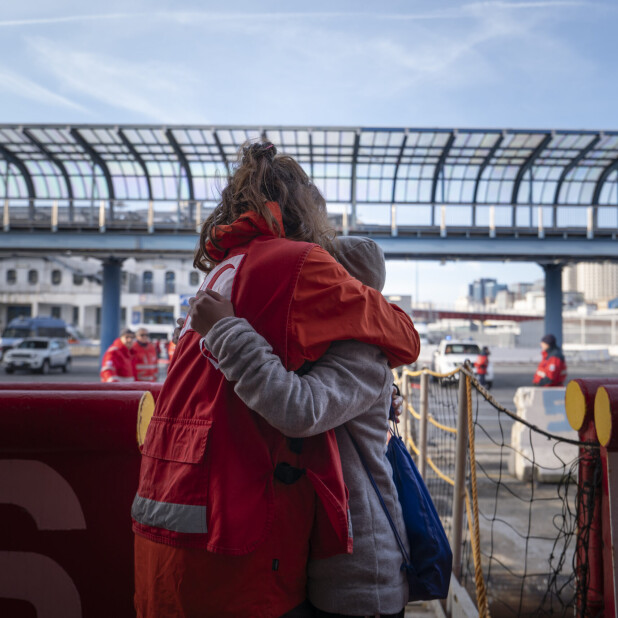
Justine first joined the SOS MEDITERRANEE Search and Rescue team in April 2021. Back on the Ocean Viking in September, Justine shares her experience in her journal. Entry 2.
“On the morning of September 18, we got ready three times to perform the rescues of boats in distress. Only one rescue was carried out, as we witnessed the Libyan coastguard intercepting the two other boats in distress in the area that day. On September 19 morning, we rescued 33 people in distress, and then at nightfall, we carried out our third operation, assisting 58 people. 116 survivors were onboard the Ocean Viking at this time. When I turned off my light at around 11pm, engulfed by fatigue, I had no idea that a few hours later a boat in distress would wake us from our sleep. During the night of September 19 to 20, we are about to perform a fourth operation in less than 36 hours.
It’s started through a voice in the doorway, quietly waking us from our sleep, warning us: “In forty minutes we will be approaching a boat in distress”. First step, make sure that the colleagues sharing your cabin are awake. Second step, have a drink, fill your stomach. Last step, put your rescue gears on. Slowly. “Ready for rescue”, we will be. There is no need to rush.
Training has taught us how to get dressed from head to toe and to prepare our rescue RHIB in ten minutes. Put on our raincoat, boots, gloves, life jackets. But what time is it by the way? 2:19 am. Nighttime. Almost full moon. On the deck of the Ocean Viking, the red headlights are busy. Everyone is at their station, preparing for the rescue to come. Tonight, we will launch Easy 1 and Easy 2, two of the three operational rescue RHIB on board.
In the middle of our FFP2 masks and our safety helmets, only our eyes can be seen. That’s enough to communicate. Glances, winks and frowns that affirm or ask “Ratchet straps off”, “Resuscitation equipment at station”, “Boat landing ready”… ” All good, mate?”.
The deck is a deafening place. And at this time, it seems that nobody wants to shout to cover the noise of the machines to be heard. Easy 2, ready to be launched. The hydraulic crane launches our RHIB. Easy 2, you have the green light to go to the boat landing. The last two crew members embark onboard. And off we go.

We head to a jerky light. On the way, a few waves breaking on the side of the dinghy refresh us. They are welcome. Air is heavy and muggy. I’m sweating. We scan the horizon with our eyes on and sail on sight towards the luminous indication. A blurred shape can be seen in the distance. A wooden boat identified. Men’s voices. Thirteen to be precise, but we don’t know it yet. The smell of fuel.
The jerky light is a mobile phone screen held at arm’s length. At least, that’s what I believe to see in the gloom. A man sitting at the back of the boat raises his arm to our attention. He insists for a few minutes, showing us a tangled rope. Perhaps he thinks he can be towed in with. I won’t know, and it won’t happen. Towing these boats – often in poor condition and overcrowded beyond their stability – would be a real danger for the people on board.
The voice that gently woke us up an hour ago is now firmly managing the distress situation. The men’s voices fade away. Our two RHIBs are alongside the wooden boat, taking it in “sandwich”. The looks are hazy, the facial features drawn, exhausted by hours of drifting. Forty-eight hours, they tell us. With a boat hook and the strength of our arms, we grab the boat’s rail so as not to lose contact. Grabbing requires energy, because the movements of the sea alternately move us away from and towards the boat. Sweat accumulates. The night is still dark, this almost full moon is not so bright. Grabbing the rail, again. Prepare the life jackets for distribution. Distribute. Once everyone has a lifejacket, the transfer of these men can begin. One after the other, quietly.
After two days of sitting without being able to stretch their legs, the effort to stand up, maintain their balance, step over their boat, walk a few steps to sit down on board the RHIB is a considerable effort. One of the survivors, exhausted, was evacuated by stretcher. The latter occupies two thirds of Easy 2’s deck space. The remaining third is taken up by a huge bag containing horseshoe lifebuoys. Three other equally large bags are attached to the sides of our dinghy. The space is optimised because it is precious. There are only a few centimetres left to move around. You must be able to balance in this constantly moving environment – which is not always the case for me.
As the transfer of the survivors occurs, their feet fumble around the stretcher to find a place to sit on our RHIB. Four survivors on board, the others board Easy 1. Faces become more relaxed. One survivor looks up at the sky and stammers. Another has his eyes crinkled with a smile. This one has only one shoe left on his feet. This other person is holding on to a bag with a few things in it. Thumbs go up in response to our questions, “I’m fine”. There are still a few stares lost in the dark. I stare at the deck of their boat. It is littered with those black inner tubes sold as life belts to those who attempt the crossing. My jaw tightens. The sight of these pseudo buoys annoys me. I know they don’t save any lives.1
Easy 2’s driver is Heading to the Ocean Viking to transfer the survivors. I crouch by the stretcher, maintaining contact with our exhausted young man. Not grabbing this time but reassuring. It’s almost over. Easy 2, you have the green light to proceed with the transfer of the survivors. One by one, the survivors climb the orange ladder of the Ocean Viking. These few rungs of the ladder are the final effort before being taken care of by the post-rescue teams. The stretcher is hoisted onto the boat using a pulley system. 1,2 pull! 1,2 pull! The stretcher, in its own way, has also climbed the rungs.
04:00 am, or probably more. A few handshakes and pats on the shoulder go around the team. The operation is over. Tonight, these thirteen men will sleep in a safe place.”
***
Photo credits: Laurence Bondard / SOS MEDITERRANEE
